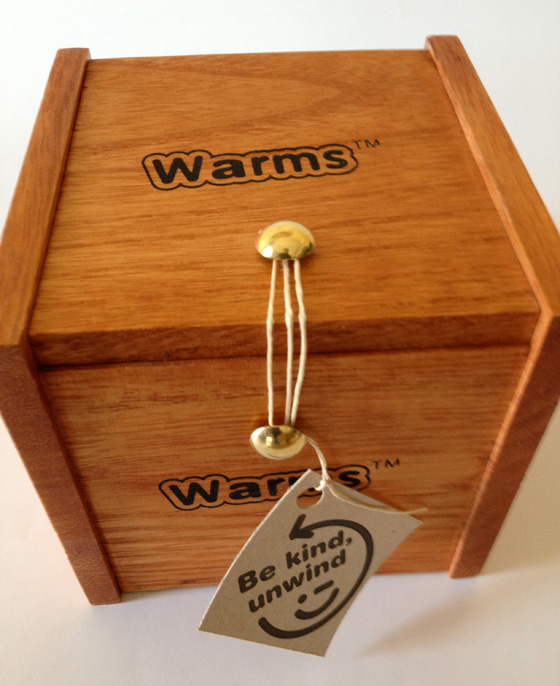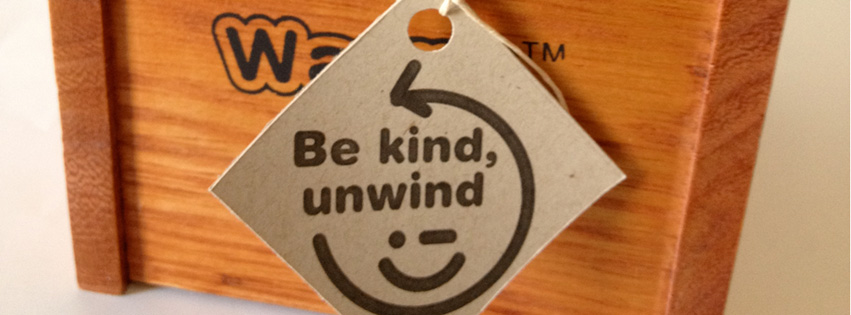Improvisation is the technology for the 21st century.
Archives For 2014

I’ve been thinking a lot about friendship lately. It’s a well-worn topic and yet there are still some aspects of it that perhaps don’t get discussed much – especially in the context of how friendships evolve over time.
This is post was originally published October 26, 2011 on the now-defunct Warms blog. I thought it was worth re-sharing for this time of year.

Warms [was] a platform that bridges the surprise and substance delivered by physical gift products with the emotion and versatility offered by digital videos and e-gifts. In doing so we [paid] very close attention to the reveal because it is through a layered unveiling that we can deliver a richer and more memorable gift experience. It’s perhaps not as obvious or easy as it sounds.
Greeting card companies, florists, e-card senders, and even chocolatiers all fall short. They may make nice/funny/tasty/beautiful products but they deliver shallow, one-dimensional experiences. A remarkable gift encompasses way more than just the object – and of course remarkability is always judged by the receiver.
Here are the six essential ingredients of a great gift…

It was around two years ago that I shut down Warm Ventures, the startup I co-founded to pursue what I thought then might be a ripe opportunity in the gift marketing space. It failed, unfortunately, and this post aims to share some of my post-mortem thoughts on the experience – including some aspects that aren’t typical in more prominent startup stories.
Our main product originally was Warms, a platform that bridged the surprise and substance delivered by physical gift products with the emotion and versatility offered by digital videos and e-gifts. It consisted of a 4″x4″x4″ gift box with an elaborate unboxing experience revealing an audible heart-holding plush character and a unique code with instructions to view a video message (and, optionally, an e-gift) from the sender. “Cheaper than flowers and more substantial than e-cards, Warms have a sense of humor and are way more fun to give.” Here was the explainer video we made for them…
The physical item consisted of several custom pieces: a hinge-top wooden box with an interior elastic lever, a button-cell sound module (think audio greeting card), different versions of a small plush doll, a transparent under-lid label with a message and code (alphanumeric and QR), two brass tacks and a hemp string lid clasp with a “Be kind, please rewind” tag on the end, a card stock wrap to seal the box closed and tease to what’s inside, and all of this was mailed in a cubic cardboard box with a wax seal like sticker on top.
This is what one looked like…
This post was originally published at the now-defunct NextMontreal blog on July 21, 2011, to indirectly promote my also now-defunct Warms venture: “Warms Bridges Offline and Online with a New Twist on Gifts”.

Since 2002 I’ve maintained a blog called Creative Generalist which, among other things, espouses some long held beliefs that broad thinking leads to big ideas. A common thread throughout many of the posts and many of the articles that are linked to is the notion that some of the most fertile and relatively undeveloped ground for new ideas is located between disciplines, cultures, technologies, generations, perspectives, and so on. Obviously there’s innovation in specializing but there’s loads of potential too by spanning silos.
I think bridging is highly underrated.
In 2004 strategy+business then contributing editor Nicholas G. Carr put forward a fascinating case for conservative innovation over disruption, arguing that bridging the breakthrough gap is a better third way — the other two are being the first mover or being the copycat — to profit from an innovation. By finding the space between where the big idea will be and where the market already is one can both profit immediately from the innovation while also moving into a better position for the future. Carr uses a couple great examples: Netflix beating webcasters that had out-innovated a market not yet serviced with broadband connections, and Toyota showing patience on the hyrdrogen fuel cell front by first producing a car (the Prius) that still uses existing technology even while moving away from it.
There’s an important lesson in this story: When a disruptive new technology arrives, the greatest business opportunities often lie not in creating the disruption but in mending it — in figuring out…a way to use an older, established technology as a bridge to carry customers to the benefits of the emerging technology.
When we talk about business innovation today, we tend to use terms like breakthrough and pioneering and revolutionary. But some of the greatest and most lucrative innovations are essentially conservative. They are brought to market by companies that are as adept at looking backward as looking forward, and that have the skill and patience to achieve the most commercially attractive balance between the old and the new. “Conservative innovation” may sound like an oxymoron, but it’s an idea that deserves to be a part of every company’s thinking…
People ask me, ‘What is the use of climbing Mount Everest?’ and my answer must at once be, ‘It is of no use.’ There is not the slightest prospect of any gain whatsoever. Oh, we may learn a little about the behaviour of the human body at high altitudes, and possibly medical men may turn our observation to some account for the purposes of aviation. But otherwise nothing will come of it. We shall not bring back a single bit of gold or silver, not a gem, nor any coal or iron… If you cannot understand that there is something in man which responds to the challenge of this mountain and goes out to meet it, that the struggle is the struggle of life itself upward and forever upward, then you won’t see why we go. What we get from this adventure is just sheer joy. And joy is, after all, the end of life. We do not live to eat and make money. We eat and make money to be able to live. That is what life means and what life is for.




